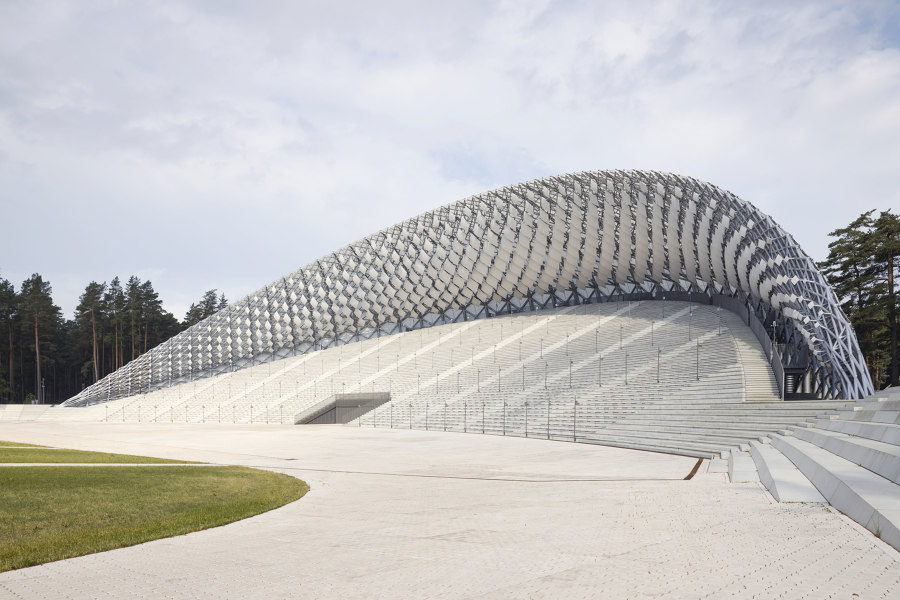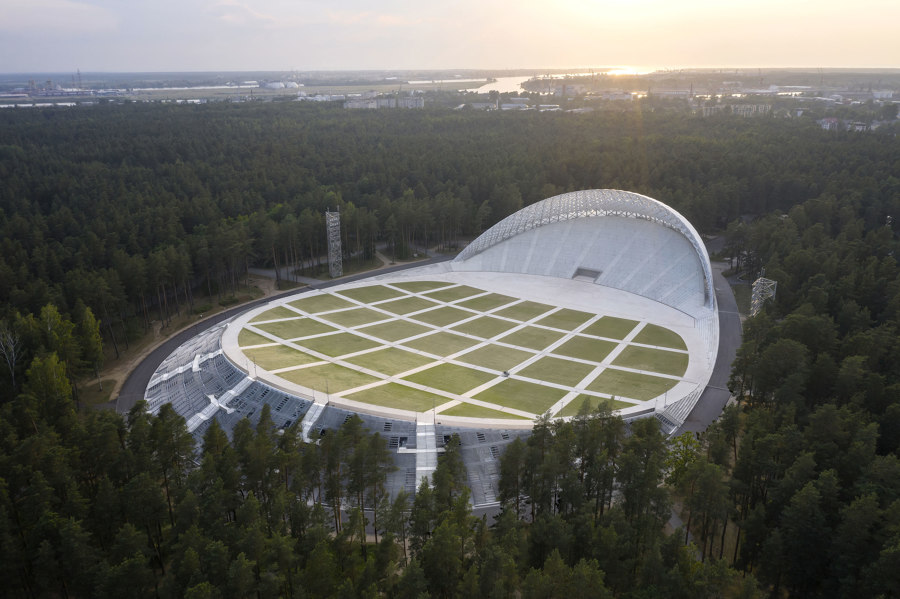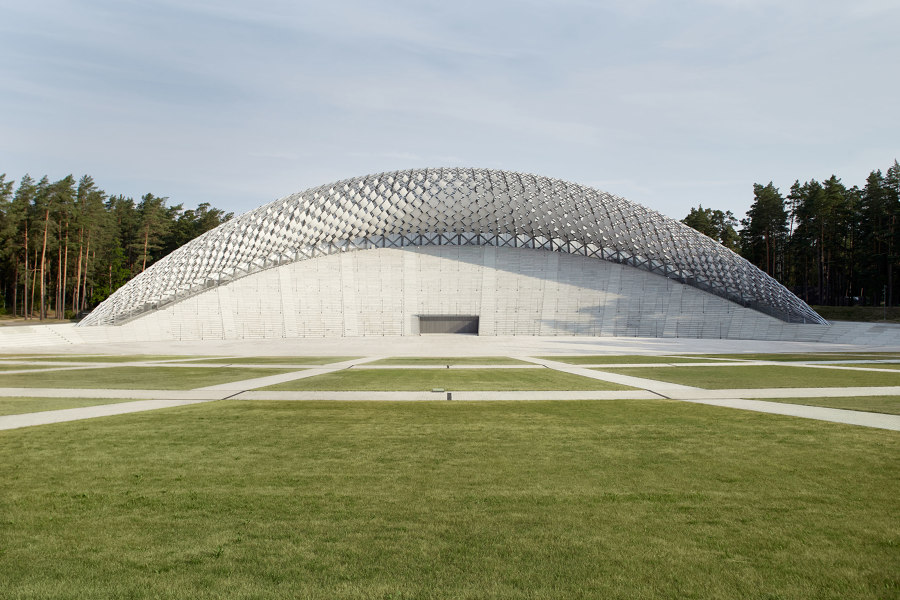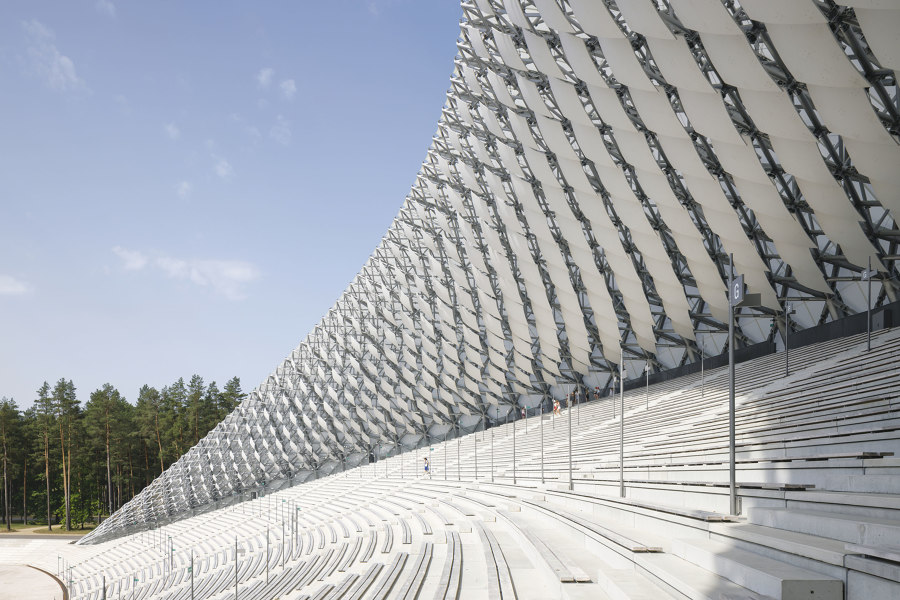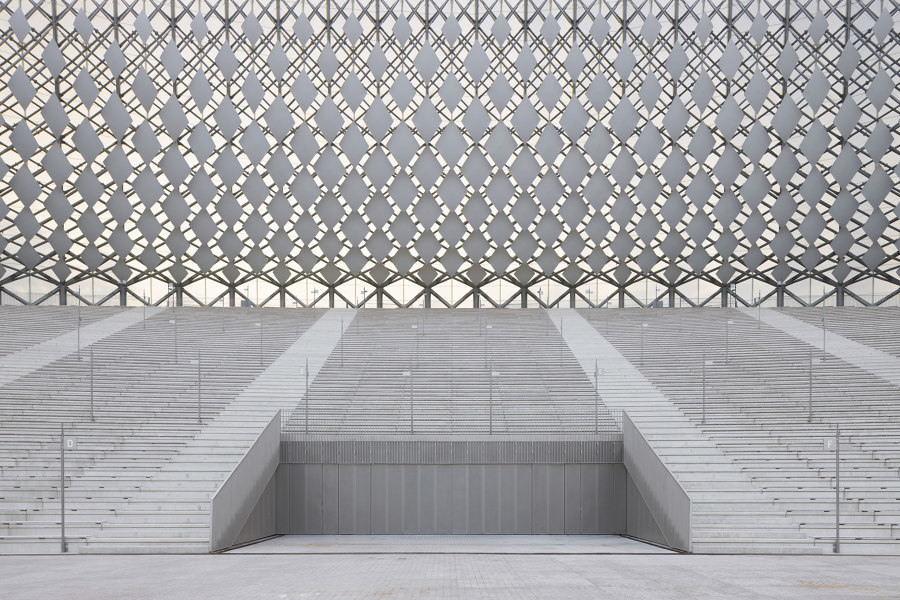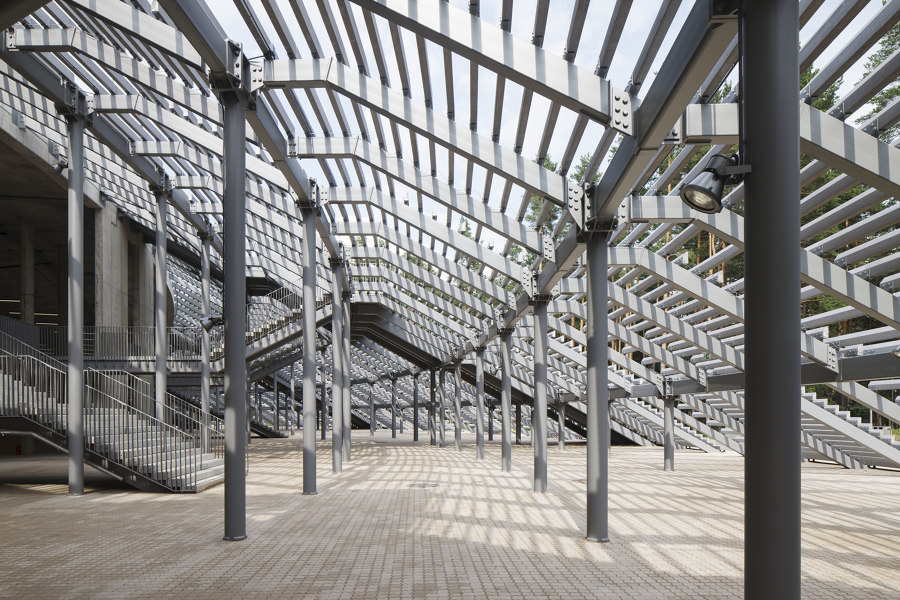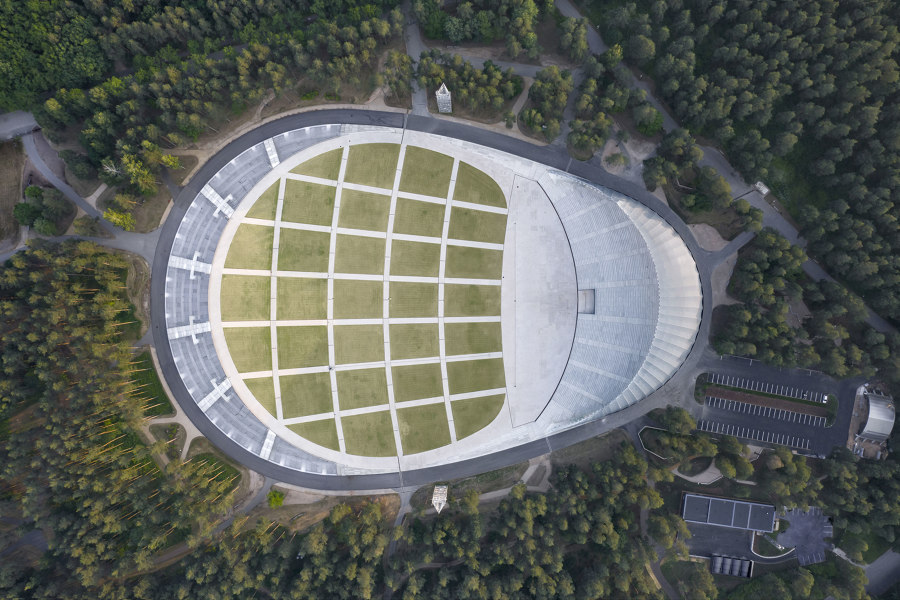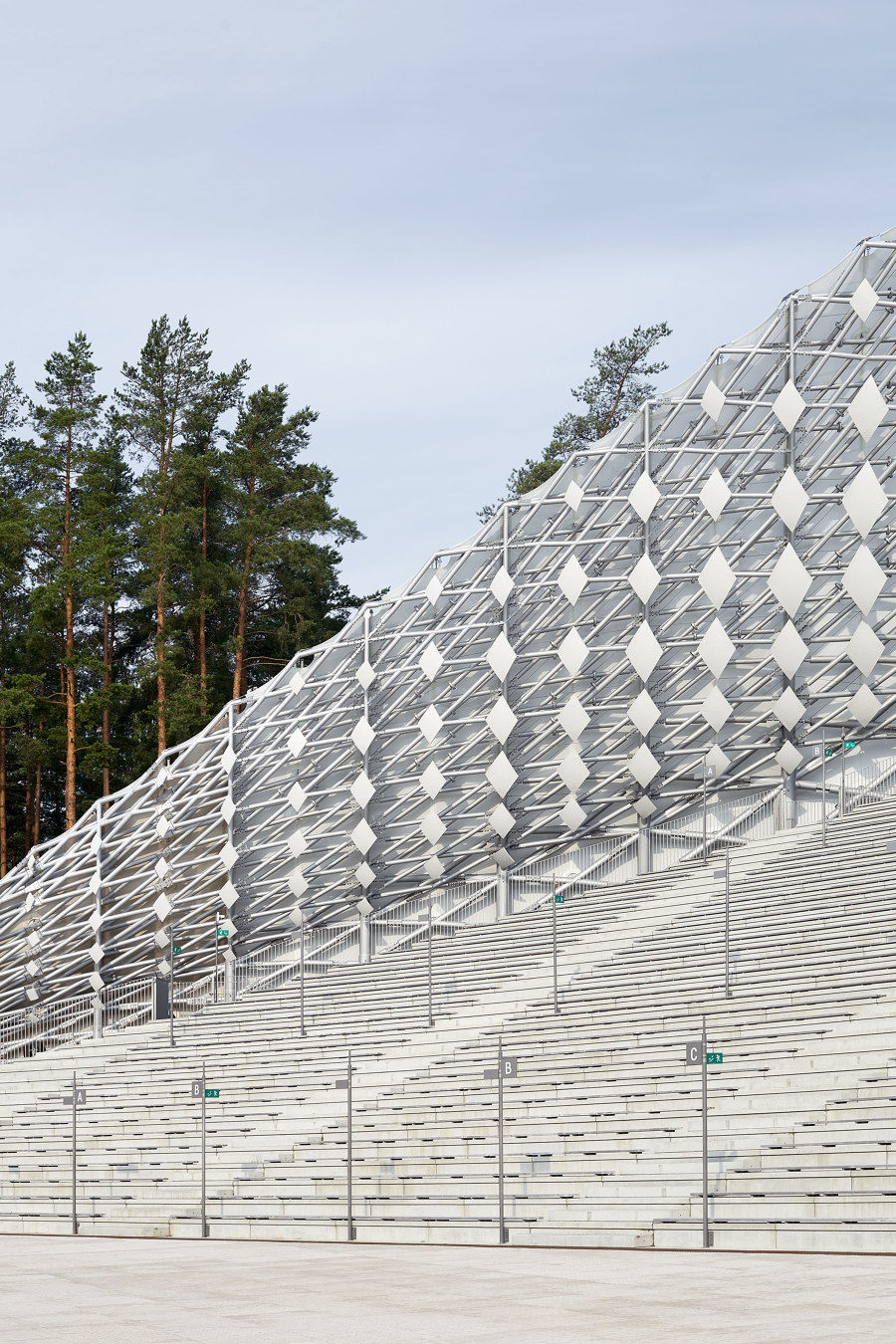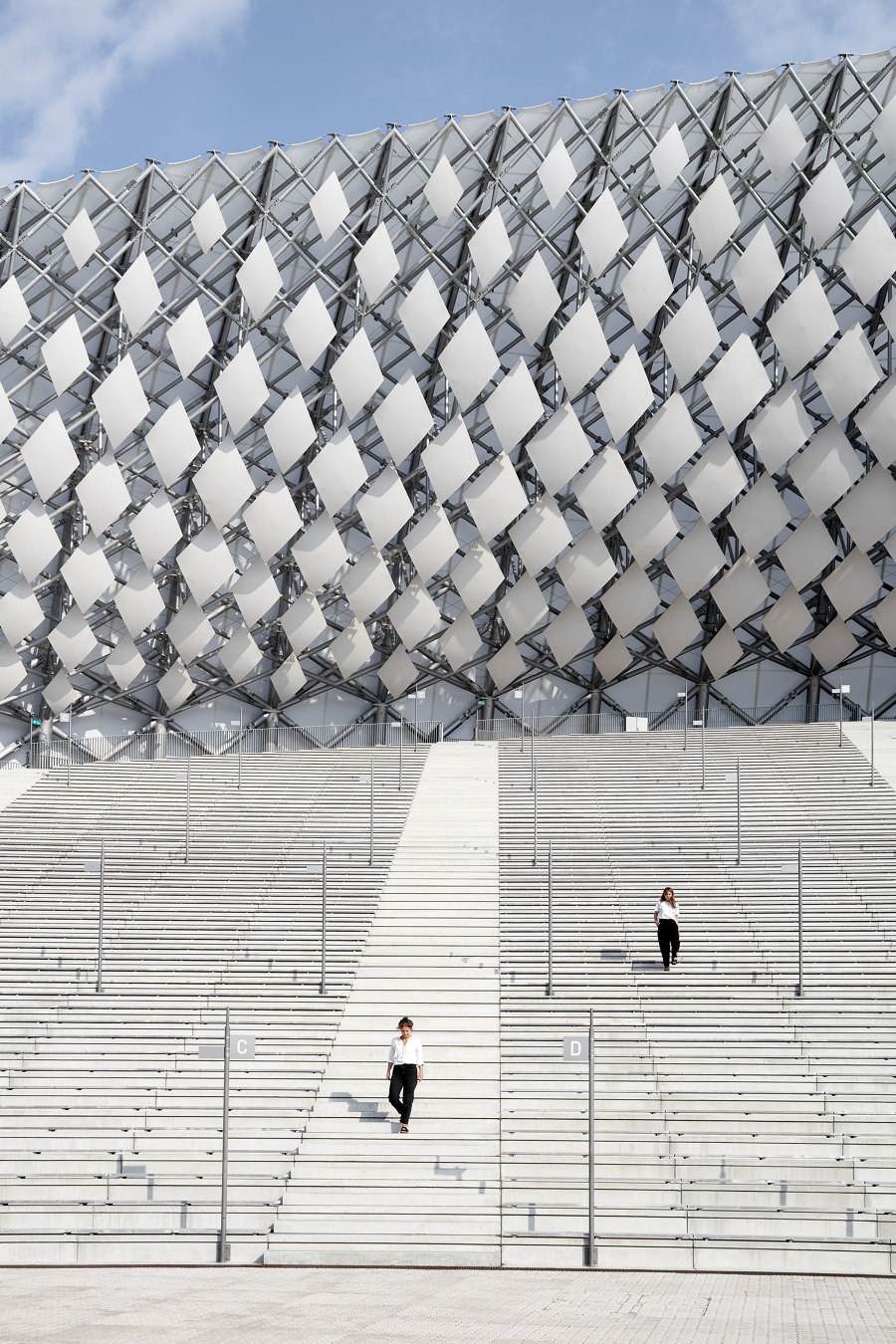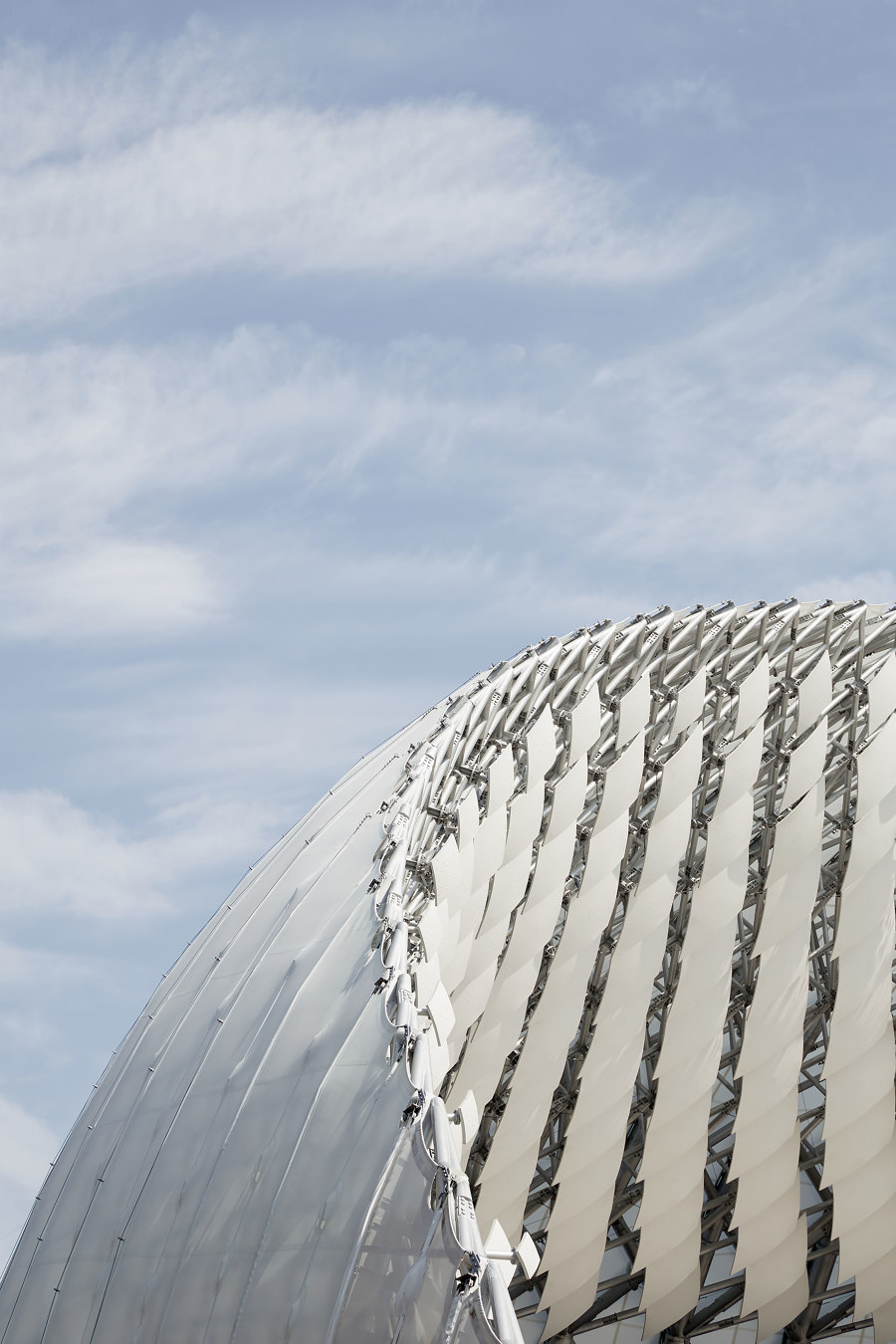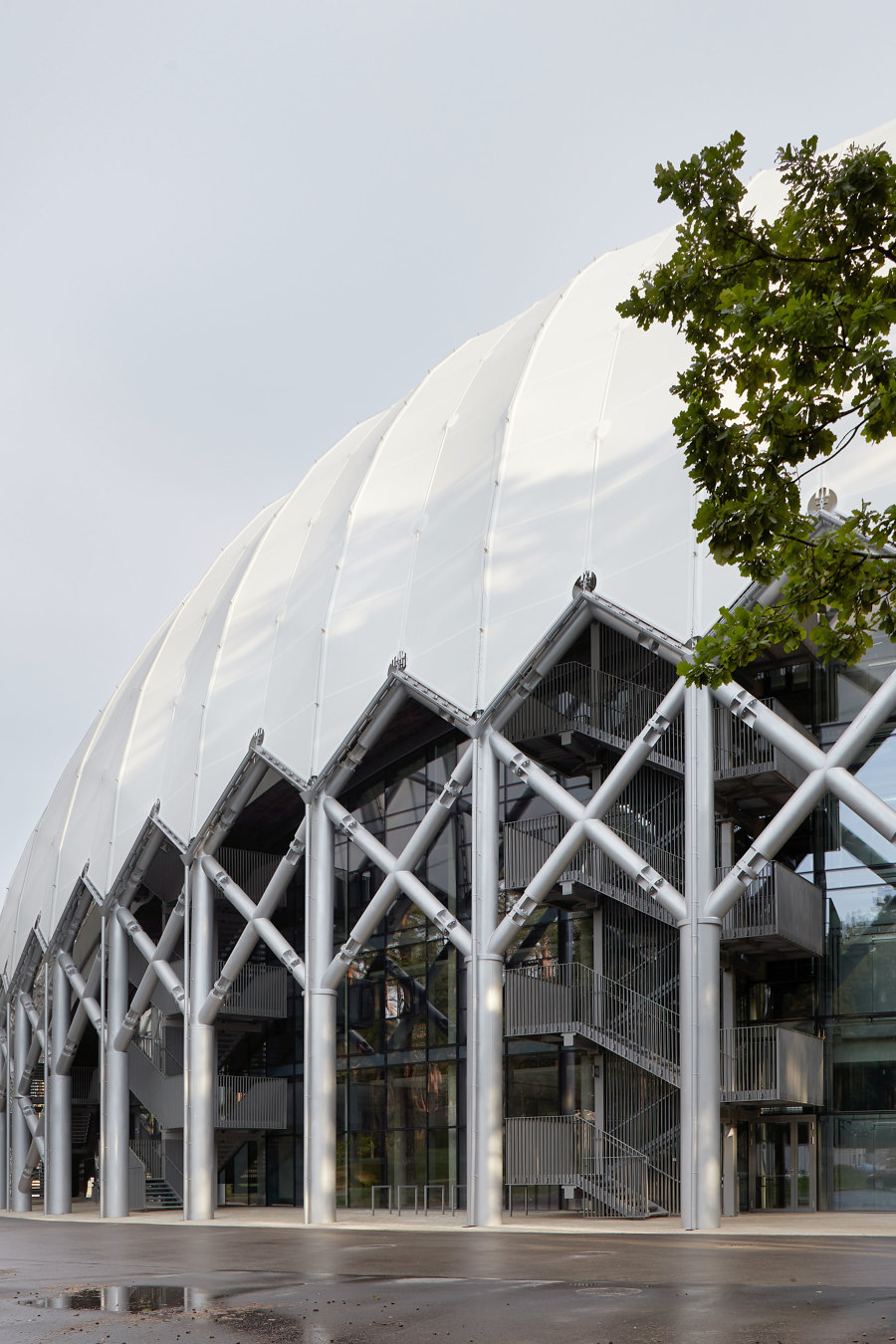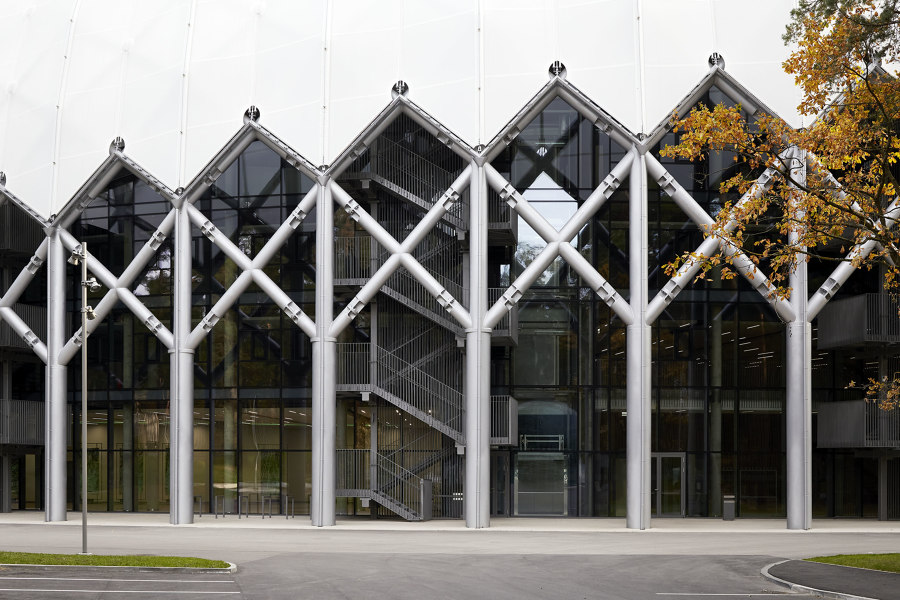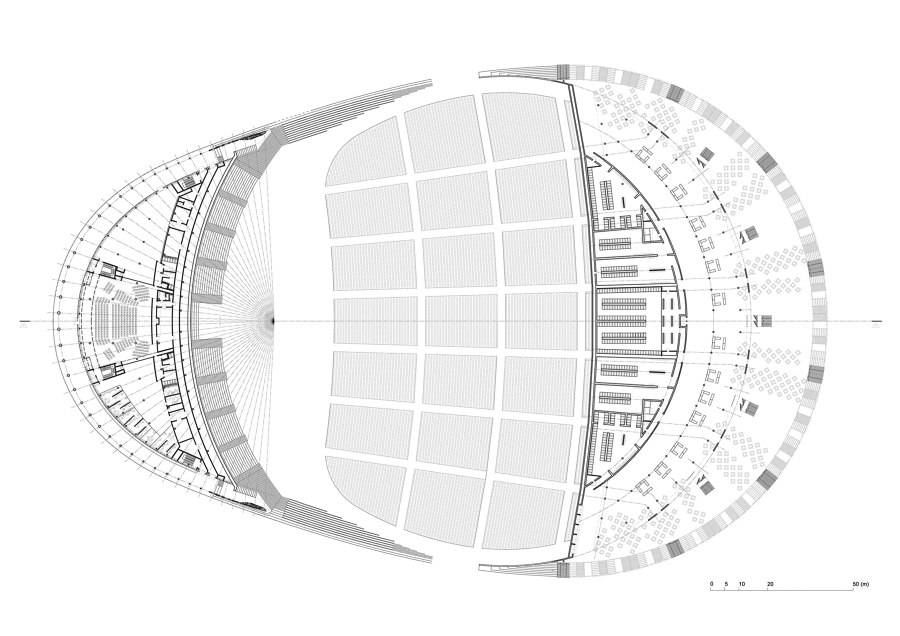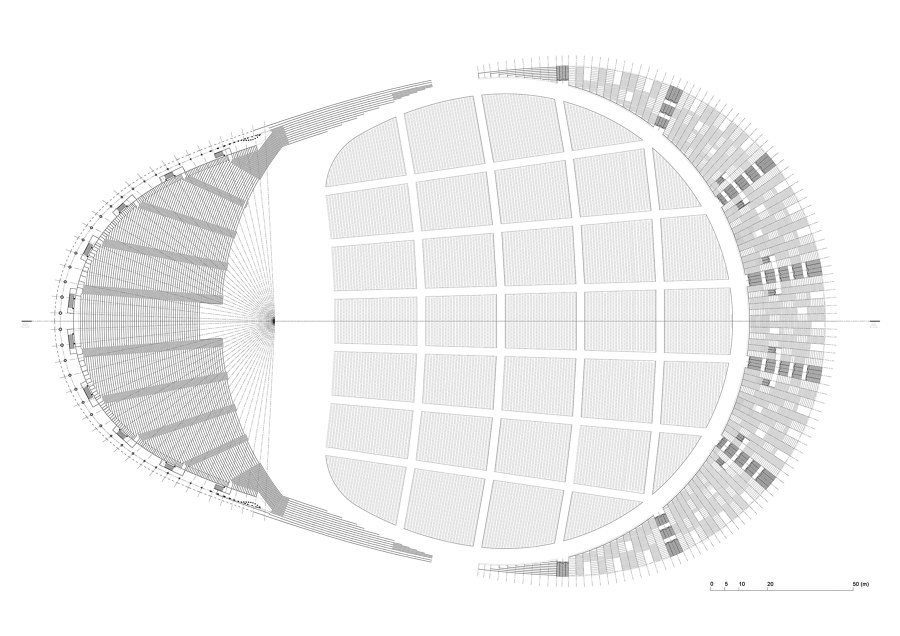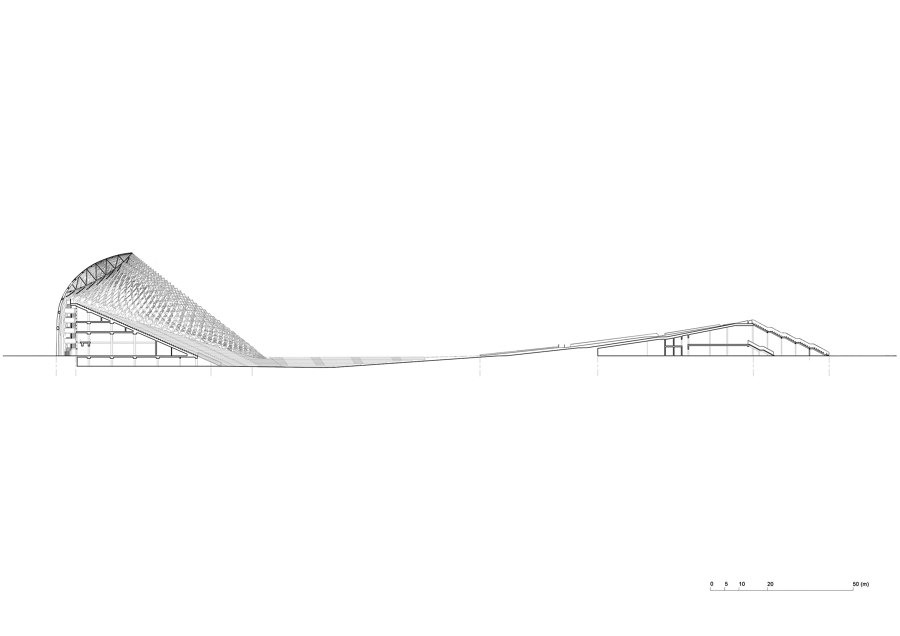Latvian Nationwide Song and Dance Celebration are one of the largest choral events in the world which are deeply rooted in local Baltic culture and are responsible for the development of national identity. Latvian Song and Dance Celebration have been included in the UNESCO Representative List of the Intangible Cultural Heritage of Humanity for its unique acapella singing which brings together a choir of up to 20 000 singers from all over Latvia.
A unique building typology, which dates back to the late 19th century, is designed specifically for this large-scale choral performance. The New Reconstruction of Mezaparks Open-air stage replaced the previous stage which was built in 1955 under the Soviet regime and no longer satisfied acoustic and safety needs. The continuous growth of the tradition demanded a unique approach to solving capacity, structural and acoustic challenges. Inspiration was found in ancient Baltic culture and nature by developing the aesthetic and philosophical mythology of Silver Forest.
Forest acoustics creates even and spacious echoes making it one of the most suitable environments for large-scale choral singing. The roof structure is designed as the leading acoustic element where separate columns grow together and form a spatially stable framework. Adjustable acoustic panels in the structure direct sound in the desired direction. The spatial analogy with the forest significantly improves the acoustic parameters of the amphitheater and hones a natural and specific sound for a choir. Local singers and conductors have described it as a unique silver sound.
The capacity of the Open-Air Stage has been increased up to 20 000 singers on choir tribune and 30 000 seats in the audience field. The benches can be moved to allow placement for a standing audience of 70 000 people. The venue provides adaptable space for various types of performances and events - acapella singing, rock-pop concerts, sports, and cultural events. Indoor spaces under the chorist tribune function as conference, concert, and exhibitions halls and offices. The venue is open daily as a center for culture and leisure.
Open-Air Stage reuses adjacent infrastructure of existing forest roads and recreational areas. Artificial forest lays harmonically in the landscape of a natural forest - a typical landscape of the Baltic coast. Its simple and democratic materials emphasize Northern aesthetic tradition and the calm curved volumes resonate with the dunes around it.
Design team:
Architects: J. Pogas Birojs, Mailitis Architects
Structural Engineering Company: LVCT, Buvinzenieru konstruktoru biros, Strandeck
Roof Membrane: Michael Kiefer
Acoustics Consultants: Andris Zabrauskis, Prof. Karlheinz Muller, Michael Wahl, Harald Frisch, Juris Saprovskis
